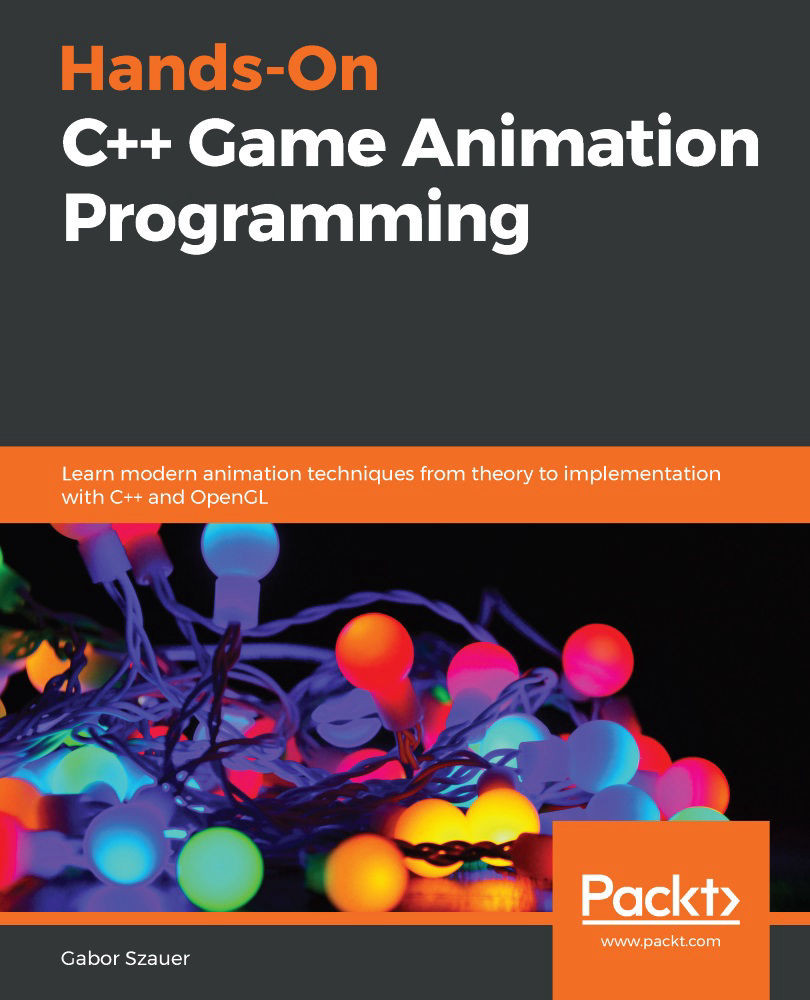Exploring more vectors
At some point later on in this book, you will need to utilize two- and four-component vectors as well. The two- and four-component vectors don't need any mathematical functions defined as they will be used exclusively as containers used to pass data to the GPU.
Unlike the three-component vector you have implemented, the two- and four-component vectors need to exist as both integer and floating point vectors. To avoid duplicating code, both structures will be implemented using a template:
- Create a new file,
vec2.h, and add the definition of thevec2struct. All thevec2constructors are inline; there is no need for acppfile. TheTVec2struct is templated andtypedefis used to declarevec2andivec2:template<typename T> struct TVec2 { union { struct { T x; T y; }; T v[2]; }; inline TVec2() : x(T(0)), y(T(0)) { } inline TVec2(T _x, T _y) : x(_x), y(_y) { } inline TVec2(T* fv) : x(fv[0]), y(fv[1]) { } }; typedef TVec2<float> vec2; typedef TVec2<int> ivec2; - Similarly, create a
vec4.hfile, which will hold thevec4structure:template<typename T> struct TVec4 { union { struct { T x; T y; T z; T w; }; T v[4]; }; inline TVec4<T>(): x((T)0),y((T)0),z((T)0),w((T)0){} inline TVec4<T>(T _x, T _y, T _z, T _w) : x(_x), y(_y), z(_z), w(_w) { } inline TVec4<T>(T* fv) : x(fv[0]), y(fv[ ]), z(fv[2]), w(fv[3]) { } }; typedef TVec4<float> vec4; typedef TVec4<int> ivec4; typedef TVec4<unsigned int> uivec4;
The declaration of the vec2, ivec2, vec4, and ivec4 structs are all very similar to the declaration of the vec3 struct. All these structures can be accessed using component subscripts or as a pointer to a linear array of memory. They all have similar constructors, as well.








































































